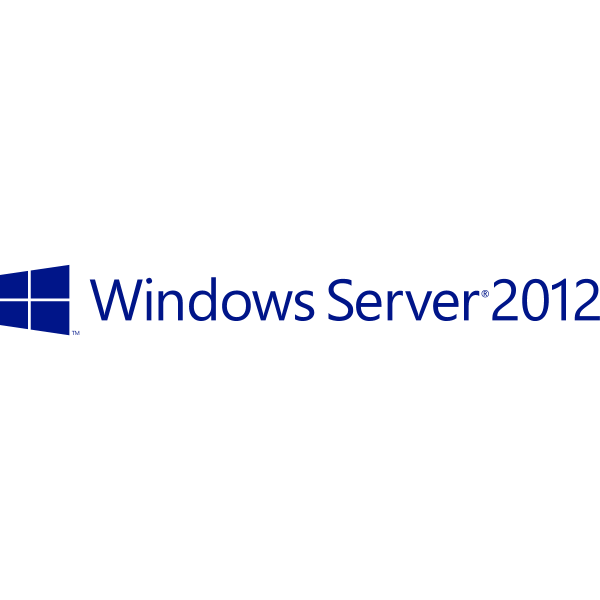Key Features:
- **User Interface and Management**:
– **Modern User Interface**: Windows Server 2012 adopted the Modern UI (formerly known as Metro), similar to the interface introduced in Windows 8. This tile-based interface was designed for ease of use, particularly in touch environments, though it was also usable on traditional desktops.
– **Server Manager**: The Server Manager was significantly revamped to provide a centralized dashboard for managing multiple servers. It allowed for role and feature installation, performance monitoring, and managing server groups from a single interface.
– **Minimal Server Interface**: This installation option is a middle ground between Server Core and the full GUI version, offering a reduced graphical interface with fewer components, thus decreasing the system’s footprint and attack surface.
- **Installation Options**:
– **Server Core**: A minimal installation option without a GUI, which reduces the server’s attack surface, resource consumption, and need for updates. Server Core is ideal for running specific server roles where a GUI is not required.
– **Full Server (with GUI)**: This installation includes the full graphical user interface, useful for those who prefer a more traditional desktop experience for server management.
- **Hyper-V Enhancements**:
– **Scalability**: Windows Server 2012 brought significant improvements to Hyper-V, including support for larger virtual machines, with up to 64 virtual processors and 1 TB of memory per VM.
– **Hyper-V Replica**: This feature allows for the asynchronous replication of VMs between two locations for disaster recovery purposes. It supports frequent replication intervals, ensuring minimal data loss in case of failure.
– **Shared Nothing Live Migration**: Enables the live migration of virtual machines between Hyper-V hosts without the need for shared storage, making it easier to move VMs across different hosts.
- **Storage Enhancements**:
– **Storage Spaces**: This feature allows for the creation of virtualized storage pools from physical disks, providing flexibility in managing storage. Storage Spaces support thin provisioning and resiliency through mirroring or parity.
– **ReFS (Resilient File System)**: Introduced as a new file system designed for maximum data integrity, availability, and scalability. ReFS is optimized for large-scale data storage, offering features like automatic corruption detection and repair.
– **SMB 3.0**: The new version of the Server Message Block protocol includes enhancements for performance, scalability, and reliability, particularly in virtualized environments and when accessing network storage.
- **Networking Features**:
– **NIC Teaming**: Also known as Load Balancing/Failover (LBFO), this feature allows multiple network adapters to be grouped into a team for redundancy and improved performance. NIC Teaming ensures that network traffic can continue to flow even if one adapter fails.
– **IP Address Management (IPAM)**: A new feature for managing and auditing IP address space across a network. IPAM helps administrators plan, track, and manage IP addresses and DNS/DHCP servers from a central interface.
– **Dynamic Access Control**: Provides more granular access control by allowing administrators to create policies that automatically restrict access to files based on user attributes, classification tags on data, and other factors.
- **Security Improvements**:
– **BitLocker**: Windows Server 2012 enhanced BitLocker encryption with support for encrypted cluster volumes and improved management tools, making it easier to secure data at rest on servers.
– **Kerberos Authentication Enhancements**: Includes support for claims-based authentication and resource-based constrained delegation, improving the security and flexibility of authentication processes in complex environments.
- **PowerShell 3.0**:
– **Expanded Cmdlets**: Windows Server 2012 introduced PowerShell 3.0 with over 2,300 cmdlets, offering greater control and automation capabilities. PowerShell 3.0 is deeply integrated into the management framework, enabling more tasks to be automated through scripts.
– **Integrated Scripting Environment (ISE)**: An enhanced interface for writing, debugging, and executing PowerShell scripts, making it easier for administrators to manage their servers programmatically.
- **Cloud and Virtualization Support**:
– **DirectAccess**: Improved and simplified in Windows Server 2012, DirectAccess allows for seamless remote access to corporate networks without the need for traditional VPNs. The setup process was made more straightforward, increasing its adoption.
– **Cloud-Optimized**: Windows Server 2012 was designed with cloud integration in mind, supporting features like dynamic scaling, hybrid cloud management, and the ability to deploy and manage cloud-based applications and services.
- **Active Directory Enhancements**:
– **AD Recycle Bin**: Improved in Windows Server 2012, allowing easier recovery of deleted objects without downtime.
– **Dynamic Access Control (DAC)**: Introduced to create more detailed and flexible access control policies across the network, incorporating attributes such as user identity, device identity, and the sensitivity of the resources being accessed.
- **Editions of Windows Server 2012**:
– **Windows Server 2012 Datacenter**: Targeted at highly virtualized environments, offering unlimited virtualization rights, which allows organizations to run as many virtual machines as needed.
– **Windows Server 2012 Standard**: Includes all the features of the Datacenter edition but with limited virtualization rights (two virtual instances per license).
– **Windows Server 2012 Essentials**: Designed for small businesses with up to 25 users and 50 devices, it includes simpler management tools and features specifically tailored for small environments.
– **Windows Server 2012 Foundation**: A budget-friendly edition for small businesses with basic IT requirements, supporting up to 15 users and limited to essential server functionality.
Reception and Impact:
Windows Server 2012 was generally well-received for its extensive feature set, particularly its advancements in virtualization, storage, and networking. The introduction of features like Storage Spaces, Hyper-V enhancements, and the new Server Manager made it a robust platform for both traditional data centers and cloud environments.
However, the new Modern UI was met with mixed reactions. While it was suitable for touch-based devices and aligned with the direction of Windows 8, many server administrators found the interface less intuitive for traditional server management.
Legacy:
Windows Server 2012 laid the foundation for many of the cloud and virtualization features that would become essential in modern IT infrastructure. It marked a significant step towards integrating on-premises server environments with cloud services, a trend that continues with subsequent versions of Windows Server. Its advancements in scalability, storage, and networking remain influential in today’s enterprise environments.

